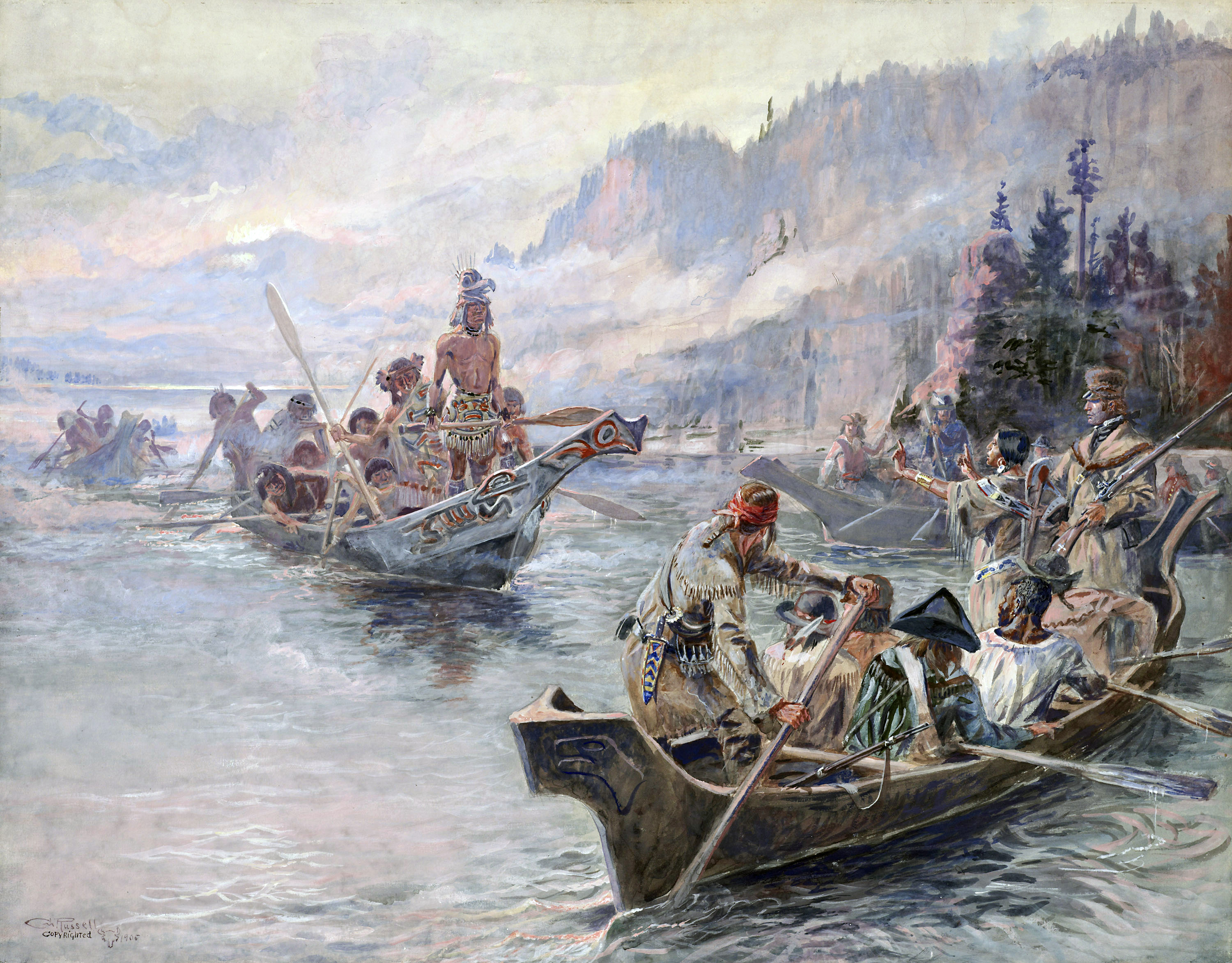Sacagawea (which means 'bird woman in the Hidatsa tongue)
was a Native American Shoshone woman who was born somewhere near modern day Salmon, Idaho in 1788. She has become one of the most famous women in American history because of the vital role she played in the success of the Lewis and Clark expedition of 1804-6. Indeed, it is almost certain that the expedition would have failed, and the members most likely have been killed, without her.
Sacagawea traveled with the expedition for thousands of miles from North Dakota to the Pacific Ocean, helping to introduce the expedition to the Native Americans along their route as well as telling Lewis and Clark about the wildlife that they encountered and had no knowledge of.
Sacagawea had a turbulent childhood. When she was about 12, she was captured by the Hidatsa tribe and taken to present day North Dakota and held captive. When she was about 13, she, and another girl, were sold to be married to a French mountainman and trapper called Toussaint Charbonneau.
All of this happened just before the Lewis and Clark expedition set out to cross the Rockies and Sierras. She was expecting her first child when they entered the Mandan village on the Missouri and set up their overwinter fort. They were looking for a mountainman who could be paid to interpret or guide the expedition up the Missouri River when spring came. They agreed to hire Charbonneau as an interpreter because they discovered his wife spoke Shoshone, and they knew they would need the help of Shoshone tribes at the headwaters of the Missouri.
Charbonneau and Sacagawea moved into the expedition's fort a week later. Clark called her "Janey ", and her son, Jean Baptiste Charbonneau was born at the fort on February 11, 1805. Clark nicknamed the boy "Little Pomp" or "Pompy."
In April, the expedition left Fort Mandan and headed up the Missouri River in pirogues. On May 14, 1805, Sacagawea rescued items that had fallen out of a capsized boat, including the journals and records of Lewis and Clark. As a result, they named the Sacagawea River in her honour on May 20, 1805. By August 1805, when the expedition reached the Shoshone tribe to trade for horses to cross the Rocky Mountains, they discovered that the tribe's chief, Cameahwait, was her brother.
This led the Shoshone to agree to barter horses, and to provide guides to lead them over the Rocky Mountains. On this perilous journey, when they nearly starved, Sacagawea was the one who found local roots to help keep them alive.
When the expedition approached the mouth of the Columbia River on the Pacific Coast, Sacagawea gave up her beaded belt so that Lewis and Clark could trade it for a fur robe they wished to give to President Thomas Jefferson.
On the return trip, Sacagawea guided them through what is now Gibbons Pass and on to cross into the Yellowstone River basin at what is now known as Bozeman Pass.
In addition to guiding and interpreting, the presence of Sacagawea as part of the expedition convinced many tribes that the expedition was peaceful, as no woman ever accompanied a war party of Indians.
When they got back to the Hidatsa people, the Charbonneaus remained behind. But three years later they went down to join William Clarke at St Louis. Charbonneau signed over formal custody of his son Jean-Baptiste to William Clark in 1813.
Jean-Baptiste went to Europe, and returned in 1829 to live as a Western frontiersman. He became a gold miner and in 1846 led a group of Mormons to California. While in California he became a magistrate for the Mission San Luis Rey.
It is not known what happened to Sacagawea in later years.
Sacagawea was Shoshone by birth. The Shoshone prefer the spelling Sacajawea, with a j instead of a g, and this is why both spellings are found.




